Post Bariatric Surgery in Turkey: Aesthetic Surgery After Weight Loss Surgery
Post bariatric surgery in Turkey, is it really a good idea? If you choose the right surgeon and centre, absolutely no brainer! Post bariatric surgery is the name given to plastic surgery operations performed to correct skin sagging that may occur in patients who have experienced a large amount of weight loss after bariatric surgery. Skin sagging after obesity surgeries may occur due to many factors. The age of the patient, the amount of excess weight, skin and collagen quality, whether a good follow-up support programme and healthy nutrition follow-up is performed after bariatric surgery, the accumulation of fat, whether exercise is performed.
In any case, after the slimming process is completed and weight loss stops, surgery can be planned for aesthetic problem areas that will disturb the patient. These secondary correction surgeries are actually a part of bariatric surgery and plastic surgeons are also included in experienced bariatric surgery teams. Decisions such as whether the patient is ready for plastic surgery, the elimination of vitamin mineral or nutritional deficiencies, if any, and whether the weight loss process has plateaued should be taken together with the bariatric surgery team. The more the patient is given to plastic surgery under optimum conditions, the better the result will be.
There are many different types of aesthetic surgery according to the areas that the patient needs. These are usually applied as a combination in most patients. In patients who have lost a large amount of weight and need multiple plastic surgeries, it is healthiest to make a step-by-step surgery programme. The most common aesthetic surgeries according to the regions are as follows:
1-What is Post Bariatric Surgery and Abdominoplasty?
Tummy tuck surgery is one of the most preferred body contouring procedures in the world to treat sagging abdominal skin and weak musculature. There are three main enemies of a smooth abdomen; rapid weight gain and loss, pregnancy and aging. Rapid weight gain and loss puts excessive strain and wear and tear on the abdominal skin and muscles.
By removing excess skin and fat and smoothing the abdominal wall, tummy tuck surgery offers a definitive solution to the biggest problem many people have with their body, with results that last for years. In this article, you will find answers to the questions about tummy tuck surgery, which more and more people prefer to benefit from its satisfactory results.
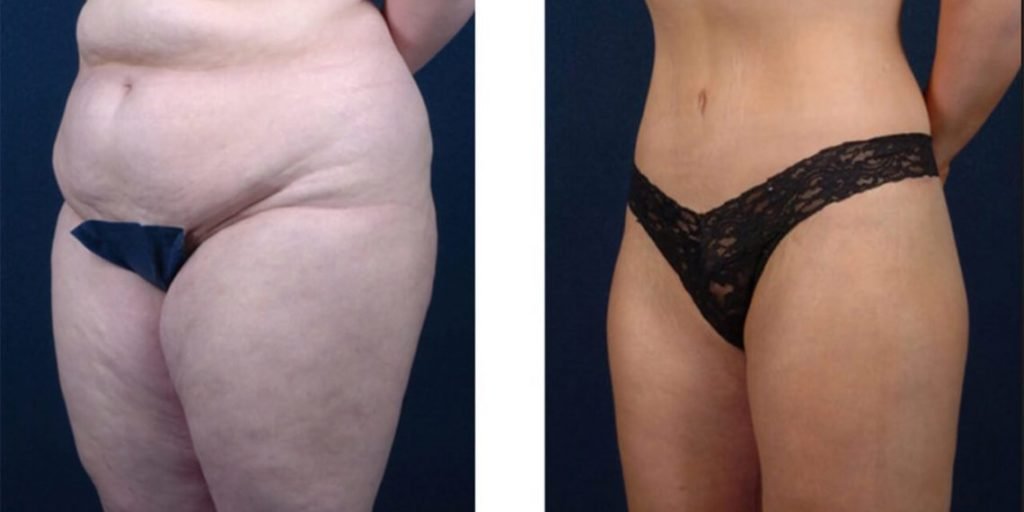
2-Is Tummy Tuck Surgery Suitable for me?
A tummy tuck repairs muscles and removes excess skin, revealing a smoother and firmer abdomen. However, it is not a substitute for a weight loss solution such as exercise, a healthy diet or bariatric surgery. The most common problem after weight loss after bariatric surgery is sagging skin in many parts of the body. This leads to physical discomfort such as wounds and infections and can wear the person out psychologically.
Although you are approaching your ideal weight, you may not be able to carry your clothes as you would like due to the excess skin on your body, and you may not feel physically slim enough. The abdominal muscles may also separate during pregnancy, and fat bags and skin sagging may occur after birth, especially in the abdomen. This appearance may also make you feel older. Tummy tuck surgeries help many people who are unhappy for reasons such as these to improve their quality of life.
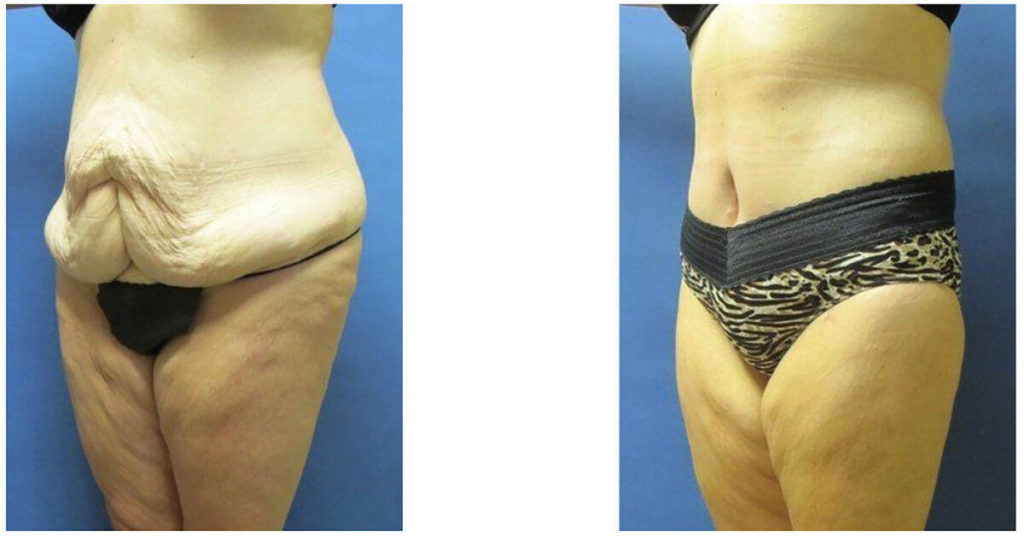
3-What Causes Abdominal Sagging?
Of course, apart from these reasons, you may have a stubborn belly that does not respond to exercise and diet due to genetic factors, although you have an ideal weight, ideal body size and a healthy body. If this situation bothers you, you can consider mini tummy tuck surgery, which is a less invasive procedure.
Are you physically healthy and at a balanced weight?
Are you healthy enough to undergo such a major operation (to be able to receive anaesthesia, not to have heart disease, circulatory disorders, diabetes, etc.)?
Do you have realistic expectations?
Do you have loose or sagging skin around your abdomen?
Do you have abdominal fat that does not respond to diet or exercise?
If your answer to most of these questions is yes, tummy tuck surgery may be suitable for you. Candidates for tummy tuck surgery preferably have a body mass index of 30 or less. If you smoke, you should stop smoking at least six weeks before and after surgery, as tobacco use and nicotine will interfere with healing.
4-How is tummy tuck surgery performed?
Tummy tuck surgeries are usually performed in three different ways depending on how complicated the procedure is: full tummy tuck surgery, mini tummy tuck surgery and circumferential tummy tuck surgery. Full tummy tuck surgery involves the entire abdomen, while mini tummy tuck surgery requires an incision below the belly button. Circumferential tummy tuck surgery is mostly performed to remove excess skin and regional, stubborn fat in the back, hip and abdomen of people who have lost excess weight after bariatric surgery.
Tummy tuck surgeries performed under general anaesthesia can take one to eight hours, depending on the type of procedure. Mini tummy tuck surgery can be completed in about one and a half hours, while other tummy tuck surgeries take two to eight hours.
For a free preliminary consultation and appointment with our expert plastic surgery team, please call +44-(7491)-068686 (including WhatsApp) or Landline: 020 805 06083 or CLICK HERE.
5-What are the Tummy Tuck Surgery Technical Steps?
During the operation, incisions are made to remove excess skin and tighten the abdominal muscles to achieve a flatter and firmer abdomen. The number and length of incisions varies depending on the type of surgery. For example, mini tummy tuck surgery involves a single, small incision below the navel. It does not require repositioning of the belly button.
Circumferential tummy tuck surgery, on the other hand, requires large incisions around the waist line because it involves the removal of sagging skin from the entire hip area, including the back. Full tummy tuck surgeries involve an incision along the front of the abdomen from one hip bone to the other. All incisions are carefully planned before surgery to increase the chance that the wounds can be hidden under the underwear.
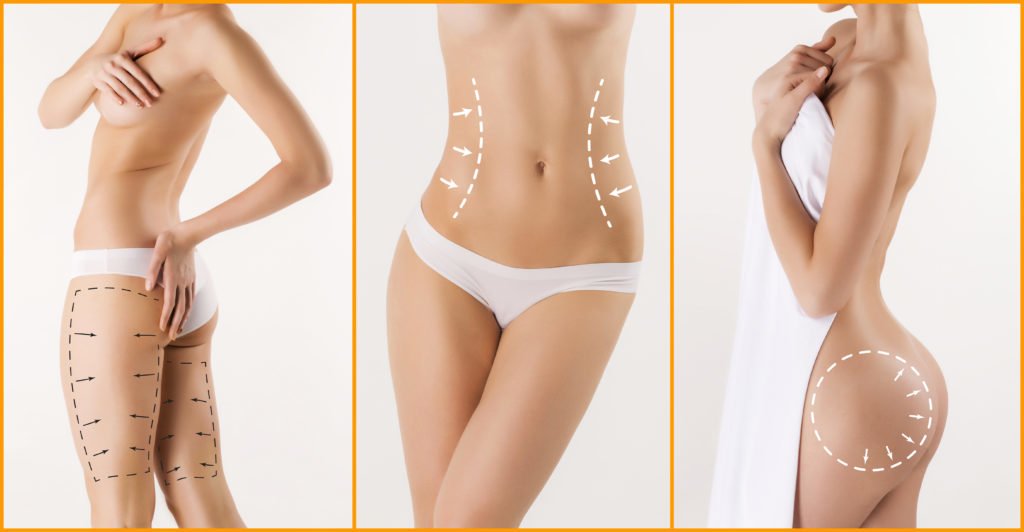
6-How are the incisions in tummy tuck surgery?
Based on your body type and lifestyle preferences, you can talk to your surgeon about changing the position of your incision. However, it is inevitable that scars will be more visible in circumferential abdominoplasty.
The belly button is usually repositioned to make the tightened skin of the abdomen look more natural. Depending on the surgeon’s choice and the course of the operation, the existing belly button can be repositioned or a new belly button can be shaped.
It is common for the abdominal muscles to become looser as we age or to separate due to pregnancy. During tummy tuck surgery, we have the opportunity to tighten the abdominal muscle mass while removing excess fat and skin from the stomach area. Through surgical incisions, the skin is separated from the abdominal walls. The abdominal muscles are pulled closer together and sutured in a position that gives them a more toned appearance. Tightening the abdominal muscles also makes the waist narrower.
7-How should I prepare for tummy tuck surgery?
While preparing for tummy tuck surgery:
Laboratory test or medical evaluation,
Take certain medicines or take your existing medicines with you,
Stop smoking,
You may be asked to refrain from using aspirin, anti-inflammatory drugs and herbal supplements as they can increase bleeding.
A tummy tuck surgery usually requires hospitalisation for one to three days. Therefore, you need to arrange for someone to accompany you during this whole process and to help you settle into your home after leaving the hospital. In addition, if you have a baby or small child, you will definitely need help to look after them.
Before the operation, you should pay attention to a healthy diet, relaxing activities, exercises and avoid stressful conditions. You should also avoid trying to lose weight with shock and strict diets. Because these will deprive you of the foods you need to take and weaken your body. The more vigorous and healthy you are, the lower your risk of complications and the easier your recovery process will be.
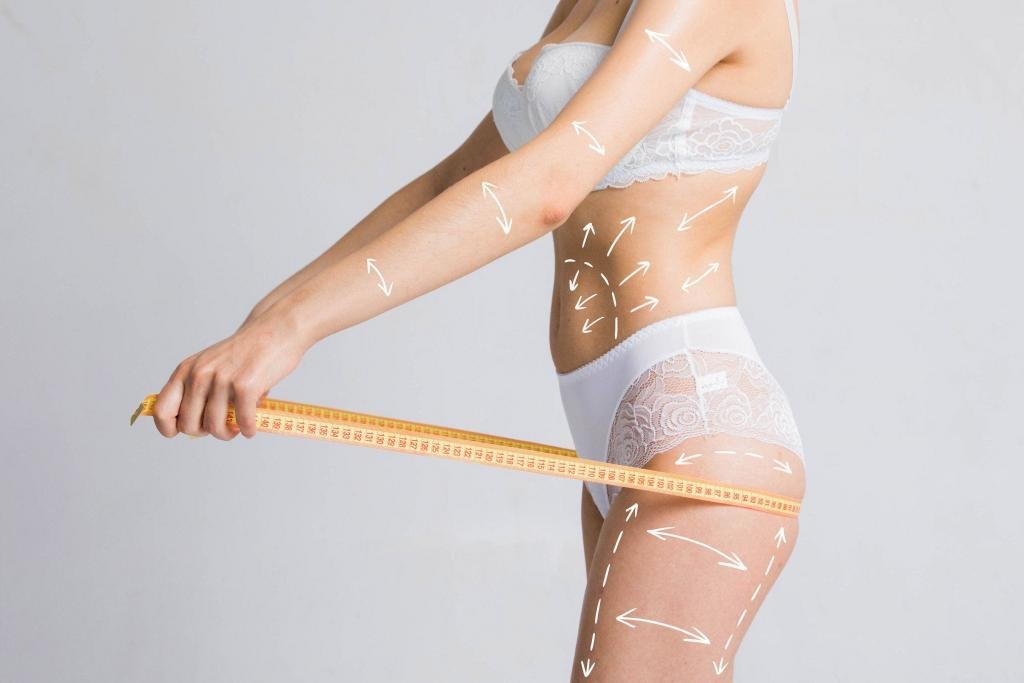
8-How long will I recover after tummy tuck surgery?
Recovery after abdominoplasty takes 4-6 weeks. After mini tummy tuck surgery, this period decreases to one to two weeks, but in other abdominoplasties, the recovery period reaches 6 weeks. Depending on the degree of your abdominoplasty and your general physical condition, you can return to work in non-strenuous conditions after two to three weeks. In most cases, after a few weeks, you can resume most of your normal activities, including some light exercise.
When tummy tuck surgery is complete, the skin is sutured using surgical sutures. With the sutures in place, your skin cells will fuse at the incision site and the wound will close naturally over time. At the same time, a surgical drain will be placed in the incision site where the sutures were placed. Surgical drains speed up the healing process and relieve pain, which is often caused by the build-up of fluids under the skin.
When your body tries to repair the surrounding cells, the fluid can cause complications during the healing process. Surgical drainage with drainage tubes is therefore a necessary measure. The drain is removed about a week after the operation, before the stitches. Your stitches will normally be removed in stages over a period of two weeks after the operation.
Most of your swelling will decrease within a few weeks, but it may take several months for all swelling to disappear. The first week is the period when you will experience the most discomfort such as swelling, pain and bruising. Small walks of a few minutes every hour every day are key to improving leg circulation and preventing blood clots.
In order not to delay the healing of your wounds, you should not smoke and avoid activities that can stretch your abdomen, such as lifting and twisting. Wearing a corset continuously will also help you to complete your expected healing process. If you act in accordance with your doctor’s instructions, you can see that your scars begin to heal after two weeks. Your scars will become less visible and flat for nine months to a year.
9-How painful is tummy tuck surgery?
Abdominoplasty is performed while the patient is under general anaesthesia, so there is no discomfort during the operation. Following surgery, most patients only take painkillers for 5-7 days. One of our primary goals during surgery is to keep you comfortable; everything is done to minimise pain.
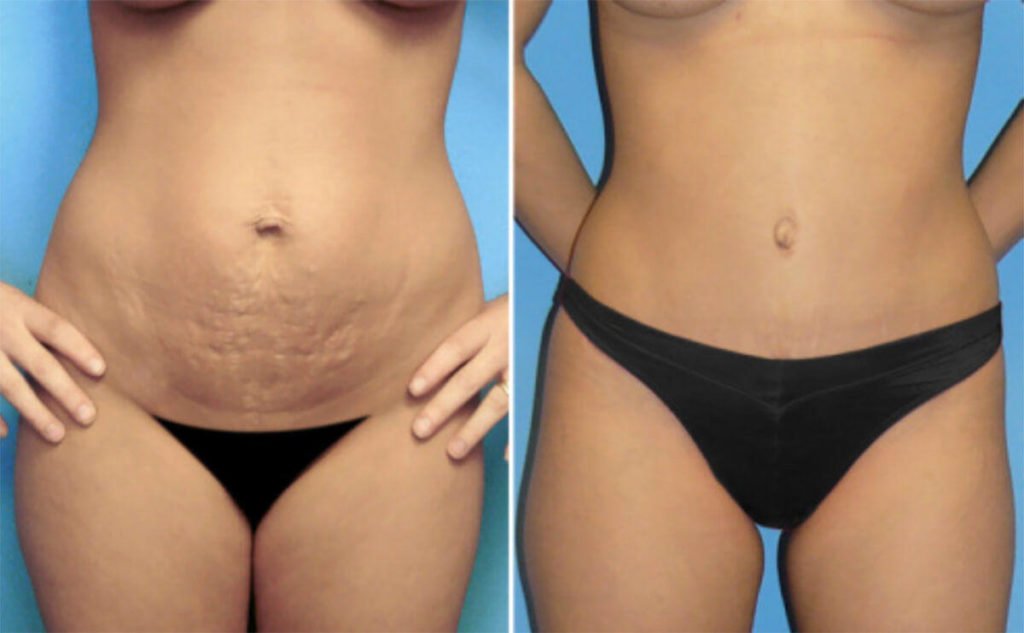
10-What are the results of tummy tuck surgery?
Tummy tuck surgery allows you to have a flatter, firmer abdomen and eliminates some stretch marks. However, you should not expect too much weight loss as a direct result. After the pannus or excess skin and fat are removed, a certain weight loss is usual. This may be 4.5kg or more for a patient who has lost a lot of weight after bariatric surgery, but significant weight loss should not be expected after correcting abdominal defects caused by pregnancy.
Those who have had tummy tuck surgery say that they feel more confident and fit, and thanks to their strong abdominal muscles, they state that they can do even exercises that were previously difficult more easily.
10-After the operation, will I return to my former self?
Unless you have a significant weight change or become pregnant, your abdomen will maintain this newly acquired tight and flat form for years. Apart from these, if you become dissatisfied with your appearance due to gravity or the aging process, you can have a tummy tuck surgery again to provide a younger body contour
11-Are there any risks of tummy tuck surgery?
A tummy tuck is a serious operation and has inherent risks that should be discussed in advance. Although abdominoplasty is considered a safe surgery, all surgical decisions should be made carefully. Some potential complications include bleeding, infection and anaesthetic reactions.
When tummy tuck surgery is extensive, there may be tissue loss along the horizontal incision sections. This complication, which delays healing, is more common in people who smoke or have medical conditions such as diabetes. Revision surgery can help in some cases where the incision sites heal poorly. Sometimes fluid can accumulate under the skin after surgery leading to the formation of a seroma. Removal of the seroma is painless, but the procedure may need to be repeated several times.
13-Can I have a child after the operation?
There is no harm in terms of health in getting pregnant and having a child after tummy tuck surgery. However, you should remember that the successful results of your surgery may decrease after pregnancy. If you have a plan to become a mother in the near future, it is best to postpone your tummy tuck surgery until after birth.
14-When can I have sexual intercourse after the operation?
Tummy tuck surgery is a serious surgery and you will need some time for your wounds to heal before having sexual intercourse. In general, patients should wait about three to four weeks after tummy tuck surgery before having sexual intercourse. Sexual intercourse is a strenuous physical activity that can cause pressure and tension that can cause the sutures to open.
In addition to tension and pressure, having sexual intercourse before or after recovery can also increase the patient’s blood pressure. We advise patients not to do things that can increase blood pressure, because the possibility of bleeding may increase or a haematoma may develop.
The abdominal muscles move a lot during sexual intercourse. Since the abdominal muscles have not yet completely healed, unnecessary movement of the abdominal wall will increase the likelihood of seroma (fluid accumulation). This can delay wound healing. Delayed wound healing can lead to further complications and also means more prominent scarring.
15- Does tummy tuck surgery remove stretch marks?
Stretch marks are a visual problem that many patients experience after weight loss. Depending on the distribution of stretch marks on the abdominal skin, most, if not all, can be removed during abdominoplasty. Typically, most of the lower abdominal skin, where stretch marks are concentrated, is completely removed during the procedure.
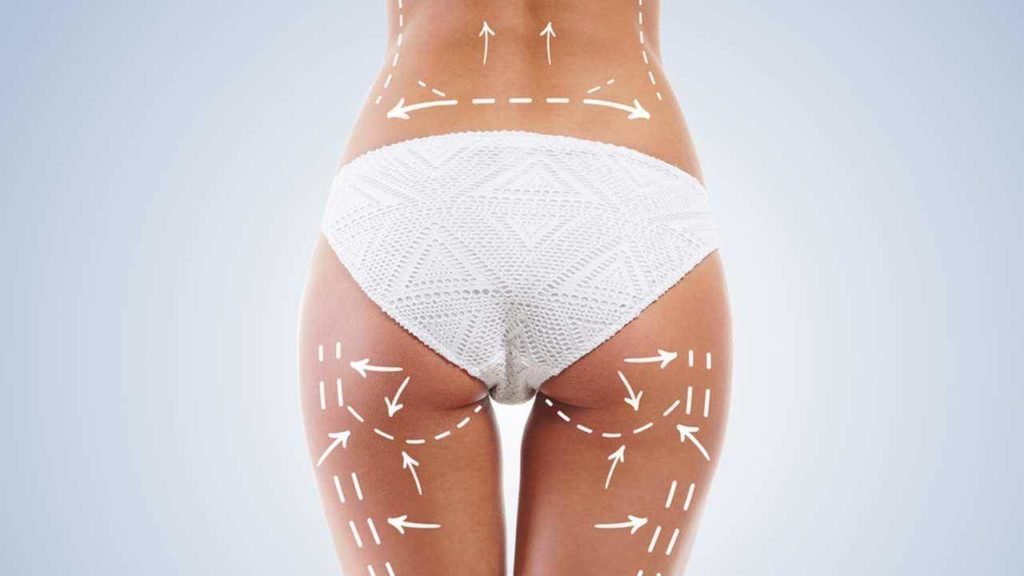
16-Can tummy tuck surgery be performed together with other aesthetic surgeries?
Abdominoplasty can be combined with another aesthetic procedure according to the needs of the person and the favourability of their health condition. For more comprehensive results, abdominoplasty can be combined with a number of surgical procedures, including
Liposuction:
Liposuction is usually performed in combination with abdominoplasty to remove excess fat cells in the abdomen. During liposuction, a popular and minimally invasive procedure, a small cannula is used to vacuum out stubborn fat cells that seem immune to diet and exercise. However, liposuction can also be performed on other problem areas such as the buttocks, hips, thighs or upper arms.
Breast aesthetics
Many women think that after having a flatter abdomen, their sagging breasts do not match this smooth appearance. For this reason, patients may prefer breast augmentation/breast reduction and breast lift at the same time. Men with gynaecomastia, which causes abnormal breast tissue and fat accumulation, can also benefit from breast reduction surgery.
Thigh stretching
Many patients who prefer abdominoplasty after excessive weight loss after bariatric surgery have loose skin and damaged muscles in their upper thighs. In a thigh lift surgery, this area can be tightened and shaped with an incision in the groin or outer thigh. After surgery, scars can usually be hidden under underwear and swimwear.
Butt lift
In addition to a smooth abdomen and legs, a fuller and firmer buttock may be desired. There are several variations in the butt lift procedure, and the one that suits the needs of each patient is carefully selected. More liposuction may be required around the buttocks. In some cases, fat cells can be isolated and injected into the buttocks to give a more rounded and pleasing shape. Sometimes silicone buttock implants can also be used to achieve the desired results.
Arm lift
Like a butt lift, an arm lift primarily targets excess skin and loose muscles that may result from weight loss or aging. During this procedure, a longitudinal incision is made from the back of the arm to the armpit or inside the arm. Excess skin is then removed and the muscle structure is tightened and corrected.
Panniculectomy
Panniculectomy is very similar to a full tummy tuck. However, it is only designed to remove the panicula, the excess skin that hangs over the lower abdomen, it does not tighten the muscles or relocate the belly button. Panniculectomy is especially applied to patients who have suffered excessive weight loss but have not yet completed the weight loss process. During this procedure, extra tissues are removed through two incisions. This operation can be performed on its own or it is often performed together with abdominoplasty.
Whole body contouring
This surgery allows two or more procedures to be performed together to tighten and contour a larger part of the body. Whole body contouring is especially recommended for people who suffer from sagging skin and weakened muscles over a large part of their body after excessive weight loss.

17-Is the scar permanent?
Although the locations of the incisions are carefully planned to minimise the visibility of your scars, scarring is inevitable. It is very important to follow your doctor’s pre- and post-operative instructions to help reduce the size and darkness of scars.
If you undergo the healing process after tummy tuck surgery within the expected time and in the healthiest way possible, your scar will be less prominent. The scars of people who have a healthy healing process after the surgery gradually fade within a year. Nevertheless, laser and stem cell treatments give satisfactory results today for people who are uncomfortable with scars.
18-What Should You do After Skin Sagging Surgery?
Skin sagging surgery, called “360 degree Body Lift” or “360 degree Body Contouring Surgery”, is a plastic surgery procedure performed to remove excess skin and fat from the abdomen, buttocks, arms, thighs and/or breasts to shape this area. Upper body contouring focuses primarily on the chest, arms and mid-back, while lower body contouring (Belt lipectomy) includes the abdomen, thighs, buttocks and hips. If lower and upper body contouring surgeries are combined in one or two stages, the treatment is known as “Full Body Contouring Surgery”. Skin sagging surgeries can help people who have lost excess weight after bariatric surgery procedures such as Gastric Bypass and Stomach Reduction.
Skin sagging surgery is a major surgical procedure performed under anaesthesia and requires a significant recovery period. There is a possibility of complications with every surgery. The most common complications of skin sagging surgery include seromas (fluid accumulations under the skin) and small skin separations. Infection, delayed wound healing, bleeding and blood clots are less common complications. If you follow your doctor’s instructions after skin sagging surgery, the risk of these complications is very low.
In most cases, a hospital stay of one to three nights is required after sagging skin surgery. Immediately after surgery, it is usual to experience swelling, bruising, pain, nausea and numbness and numbness in the surgical areas. Intravenous or intramuscular injections of painkillers will help to ease your discomfort. These are replaced with oral anti-inflammatory and painkillers during the recovery period at home after leaving hospital. Your doctor may also start antibiotic treatment to prevent infection at the wound sites. In this process, taking your medication regularly is one of the most important things to do after skin sagging surgery. Continuing your medication without interruption and in accordance with your doctor’s instructions will facilitate pain management.
Drainage tubes placed under the skin at the end of the operation are usually removed by your doctor within 5 days. These tubes reduce swelling and remove blood and other fluids that accumulate in the wound areas. Although drainage tubes may cause some physical discomfort, it is important to empty them 3-4 times a day as directed by your doctor to prevent many complications. Surgical dressings are usually removed a few days after surgery. You will also be asked to wear a corset continuously after surgery. You should follow your surgeon’s instructions on how long you should wear this corset, which will minimise swelling.
You should not take a shower for the first week. However, you can wipe your body with a soapy sponge. Your doctor will give you detailed information about wound care and when you can start showering.
Your activities will be restricted until you recover from the surgery. You should not lift heavy weights and avoid movements that strain your body, which may cause your stitches to open or cause other complications. Sexual activity causes an increase in blood pressure and exercises the abdomen, buttocks and legs. These can lead to unwanted complications such as infection, bleeding, embolism, and poor wound healing after tummy tuck surgery. Therefore, sexual activity is not recommended until your wounds are completely healed.
Very light walking is encouraged after surgery to reduce the risk of potentially developing blood clots in your legs. Even walking around the house to and from the kitchen or bathroom every hour or so will be effective. As it is recommended that you drink at least 8 glasses of water a day, your frequency of going to the toilet will increase accordingly. When sleeping or resting, your legs and back should be kept at a 45-degree angle, slightly elevated, supported by pillows. You should avoid lying on your back or face down. From time to time you can also lie in the foetal position.
After skin sagging surgery, most people require a recovery period of four to six weeks before returning to normal activities. In order for your wounds to heal in the best way during this period, it is recommended that you follow a healthy diet low in carbohydrates, fat and sugar, high in protein, vitamins, minerals, fresh fruits and vegetables, and plenty of fibre. You should reduce foods that can increase your oedema such as salt and increase water consumption. Thus, your immune system will be strong enough for wound healing during your immobilisation period.
It will take approximately 9 months for your scars to gradually flatten and fade. For a healthy wound healing, in addition to the above described above, you should not expose your scars to the sun.
You should avoid smoking and alcohol. The risk of complications after surgery increases because nicotine causes the vessels to constrict. Arteries and capillaries that narrow due to nicotine supply less blood to the tissue required for normal healing. Therefore, smoking after skin sagging surgery increases the risk of serious complications such as delayed wound healing, necrosis (tissue death) and infection.

